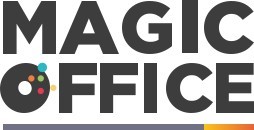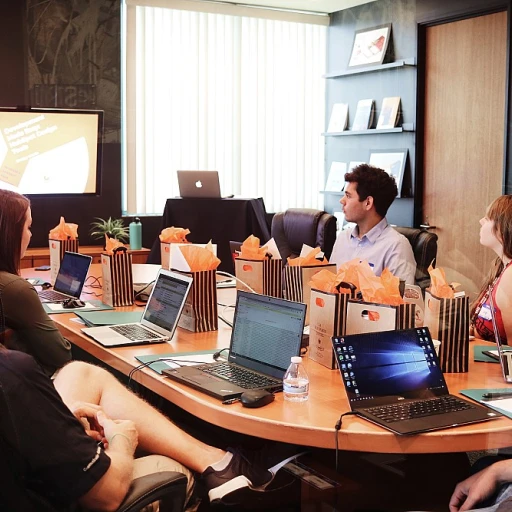
Identifying Cultural Barriers Within the Office Environment
Unveiling the Invisible Walls: Navigating Cultural Challenges in the Workplace
In today's diverse office environments, culturally rooted misunderstandings can be an undercurrent eroding team cohesion. A survey by the Society for Human Resource Management (SHRM) highlighted that cultural conflicts are a significant challenge, affecting up to 72% of workplaces. These invisible walls manifest as differences in communication styles, work ethics, and expectations, often leading to decreased productivity and employee satisfaction.
Exercise Empathy: The First Step in Culture Bridging
To address this, office managers must first identify these barriers by fostering open communication and exercising empathy. Encouraging employees to express their cultural perspectives can illuminate potential conflicts. Expert analysts suggest this to be the cornerstone of a proactive approach, pivotal in enhancing team dynamics.
Decoding Cultural Nuances: A Strategic Necessity
Next, understanding the nuances of different cultures is essential for office managers. A study by the Harvard Business Review points out that one in every four managers fails due to cultural insensitivity. Empathy paired with knowledge equips managers with the tools to arbitrate and mediate effectively, ensuring that diverse teams function as cohesive units.
Empowerment through Cultural Knowledge
To bridge gaps, incorporating cultural competence training is a game changer. This strategic initiative, according to statistics from Forbes, leads to a 35% increase in employee engagement. By enabling employees to better understand their differences, office managers set the stage for a more dynamic and harmonious workplace. Crafting sessions that are both instructional and engaging, possibly using role-playing or simulations, can make this training an impactful experience.
Becoming a Champion of Inclusive Initiatives
Inclusive initiatives are not just corporate buzzwords but necessary strategies to enhance team dynamics. They shift from merely identifying cultural differences to celebrating them. Whether it's through cultural spotlights in team meetings or inclusive policy-making, these initiatives promote a sense of belonging, which, according to research from Deloitte, can result in an 83% increase in worker productivity.
Setting Benchmarks for Cultural Harmony
Finally, monitoring and measuring cultural harmony becomes fundamental to assessing progress and identifying ongoing issues. The use of timely surveys and feedback mechanisms aligns with the analytical facet of office management, ensuring that initiatives remain thought-provoking and influence office culture positively. An analytical approach coupled with detailed tracking is recommended to facilitate continuous improvement in cultural dynamics within the office.
Implementing Cultural Competence Training: A Game Changer?
Unveiling Office Cultural Hurdles: The First Step Towards Unity
In today's fast-paced globalized economy, an office manager must be adept at identifying cultural barriers that can impede office harmony and productivity. Cultural challenges in the office environment often manifest as miscommunication, varied work ethics, differing approaches to hierarchy and authority, and contrasting conflict resolution styles. Such barriers, if not addressed, can lead to decreased morale and a drop in team cohesion. Statistics from a 2019 Forbes study show that diverse teams are 35% more likely to outperform their homogenous counterparts, suggesting that overcoming these barriers is not just a nice-to-have, but a strategic necessity.
Tackling Miscommunications and Misunderstandings
Miscommunications can arise from language differences and non-verbal misinterpretations, potentially leading to confusion and conflict. For instance, something as simple as the meaning of a nod can vary widely across cultures, as referenced by a Harvard Business Review article on cross-cultural communication. An office manager must employ active listening and clarity in communication as tools to bridge these gaps. Examples of this can be the use of plain language over industry jargon, or adopting visual aids to ensure that all team members are on the same page.
Harmonizing Work Ethics and Approaches to Hierarchy
Diversity in work ethic and respect for hierarchy also plays a significant role in cultural barriers at work. Some cultures may prioritize collective success over individual recognition, which can be a source of friction in teams that value individual contribution. A survey by Gallup indicates that 1 in 3 employees say that a role that allows them to have greater work-life balance and better personal well-being is "very important" to them. This statistic underlines the fact that for some team members, work is just one aspect of life, while for others, it can be the central focus.
Cultivating Effective Conflict Resolution
Cultural diversity also affects conflict resolution. An office manager must be sensitive to the fact that people from different backgrounds may have unique ways of expressing disagreement or discontent. According to the American Management Association, companies lose 20-30% of revenue due to inefficiencies, a portion of which can be attributed to poorly managed conflicts. Culturally competent conflict resolution strategies such as mediation, role clarification, and creating an environment of openness can be effective in managing these subtleties.
Measurable Impacts of Cultural Disharmony
Monitoring workplace culture is paramount, especially when considering the measurable impacts of cultural disharmony. Research by Deloitte outlines that inclusive teams make better business decisions up to 87% of the time. Yet, without a benchmark, it's challenging to gauge progress. In the pursuit of cultural harmony, office managers may employ surveys and feedback mechanisms to track changes and adjust strategies accordingly.
Each of these elements are explored further as we delve into how cultural competence training can be a game changer, how inclusive initiatives enhance team dynamics, and the best practices for monitoring and measuring cultural harmony within an office environment.
Enhancing Team Dynamics Through Inclusive Initiatives
Revolutionizing Office Management with Cultural Competence Training
As the backbone of any thriving business, office managers are increasingly recognizing the need to cultivate cultural awareness within their teams. A staggering 75% of employers rate teamwork and collaboration as 'very important', yet only 18% receive communication training that focuses on cross-cultural team building, according to a survey from Queens University of Charlotte. Cultural competence training stands out as a game changer in this realm, offering office managers the tools to dismantle cross-cultural barriers effectively.
Implementing training programs that emphasize cultural diversity not only promotes inclusivity but leads to a surge in employee engagement and satisfaction. A study from Forbes indicates that inclusive teams make better business decisions up to 87% of the time. Moreover, they deliver decisions twice as fast with half the meetings. The office environment morphs into a dynamic powerhouse of productivity and innovative thinking when enriched with cultural competencies.
Building the Bridge with Diversity Training Workshops
Cultural Competence Training often includes workshops and seminars that are tailored to address the specific cultural dynamics within a company. An exemplary strategy is to integrate real-life scenarios and role-playing exercises, allowing team members to experience firsthand the challenges and benefits of intercultural collaboration. For instance, Harvard Business Review highlights that employees trained in diversity are 70% more likely to capture a new market.
- Understanding cultural norms and values
- Developing effective communication strategies across cultures
- Embracing diverse perspectives to foster innovation
Multifaceted approaches in workshops encourage not just learning but the application of cultural intelligence in daily office interactions.
The Ripple Effect of Cultural Learning
Investing in cultural competence training is more than an educational endeavor; it's a strategic move that promotes a healthier workplace culture. When employees feel understood and respected, the ground is set for a transparent and cohesive work environment. According to Deloitte, 83% of millennials are actively engaged when they believe their company fosters an inclusive culture. This figure drops to a mere 60% when the organization does not.
Office managers who prioritize cultural competence are not just bridging gaps; they are also building a sustainable competitive advantage. The numbers speak volumes; inclusive companies are likely to be 1.7 times more innovative and 120% more likely to hit financial targets. Cultural competence is not a one-and-done workshop; it's a continuous journey towards a unifying office culture that embraces and celebrates diversity.
Monitoring and Measuring Cultural Harmony
Creating an Inclusive Office Culture for Optimal Team Performance
Fostering an environment where every employee feels included is crucial for the synergy of an office team. Recent statistics from the Harvard Business Review highlight that teams with inclusive cultures outperform their peers by a staggering 80%. Inclusive initiatives can range from celebrating different cultural holidays to setting up regular team-building exercises that underscore diversity.
- Highlighting various cultural festivals within the office calendar
- Facilitating diversity days which encourage employees to share their heritage
- Collaborating across departments on diversity-driven projects
Cultivating Communication Skills to Break Through Cultural Boundaries
An office manager’s guide to excellence often emphasizes the need for enhanced communication skills. A survey by McKinsey & Company suggests that diverse teams can improve their communication by up to 29% when inclusivity is a priority. To achieve this, initiatives may include:
- Language and communication workshops tailored to multicultural workplaces
- Conflict resolution training to navigate cultural misunderstandings with grace
- Encouraging open dialogues in team meetings to ensure all voices are heard
Leveraging Technology to Unite Disparate Cultural Backgrounds
The deployment of collaborative software platforms can unify team members from diverse cultures, enhancing workplace connectivity. A Forbes article on workplace technology uncovered that technologically advanced collaboration tools could increase productivity by as much as 30%. Office managers are strategically advised to integrate:
- Cross-cultural communication apps that translate in real-time, bridging language gaps
- Project management tools that foster transparent and inclusive workflow processes
- Virtual reality experiences for remote teams to engage in cultural empathy exercises





